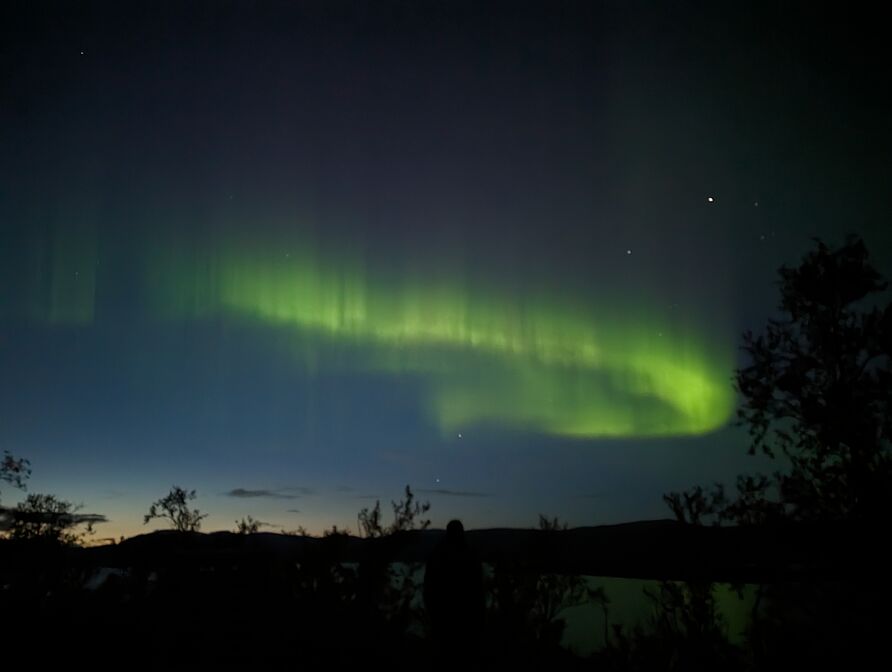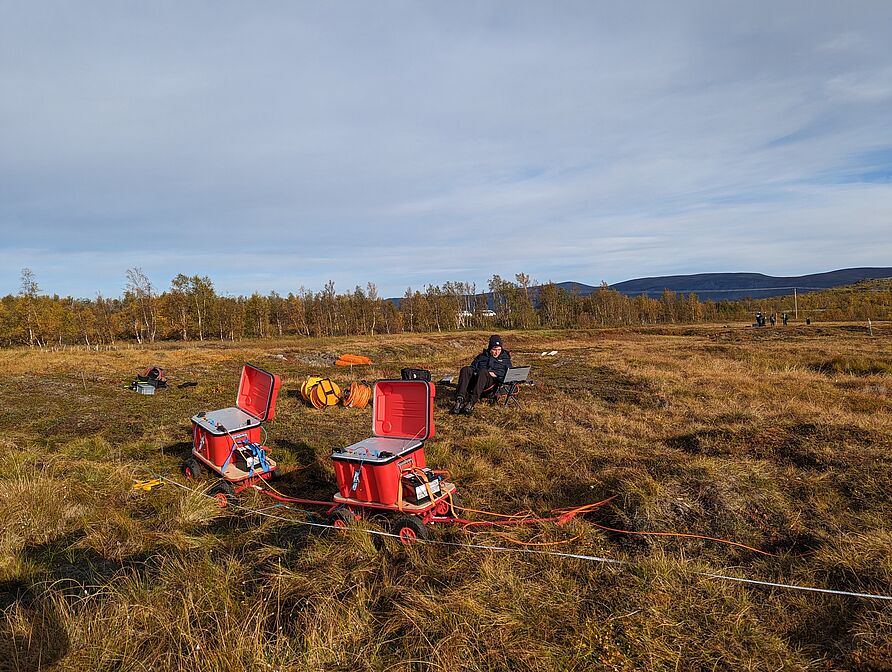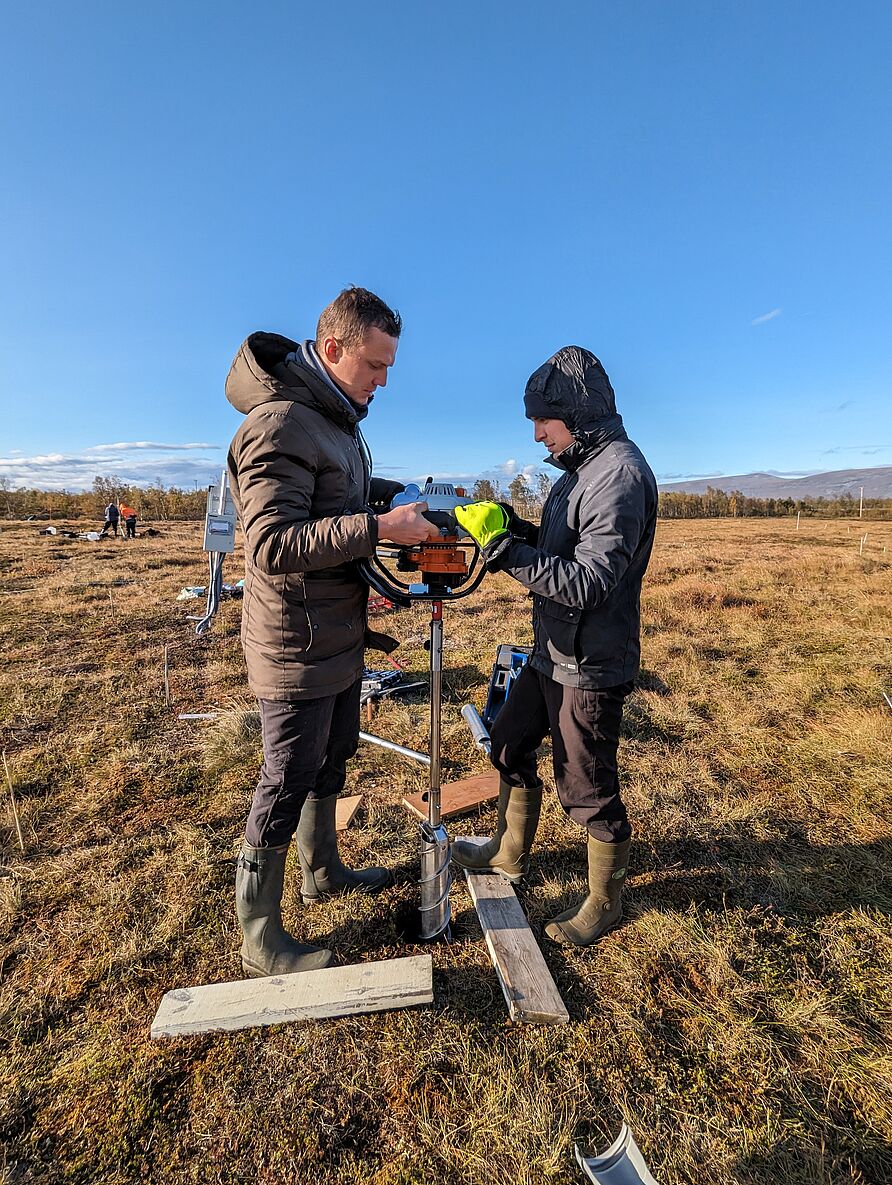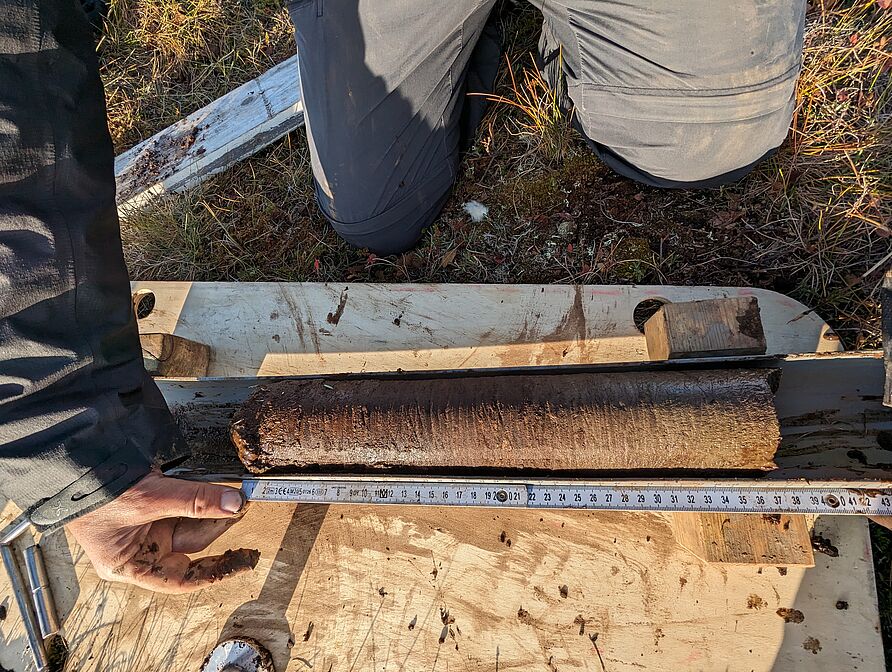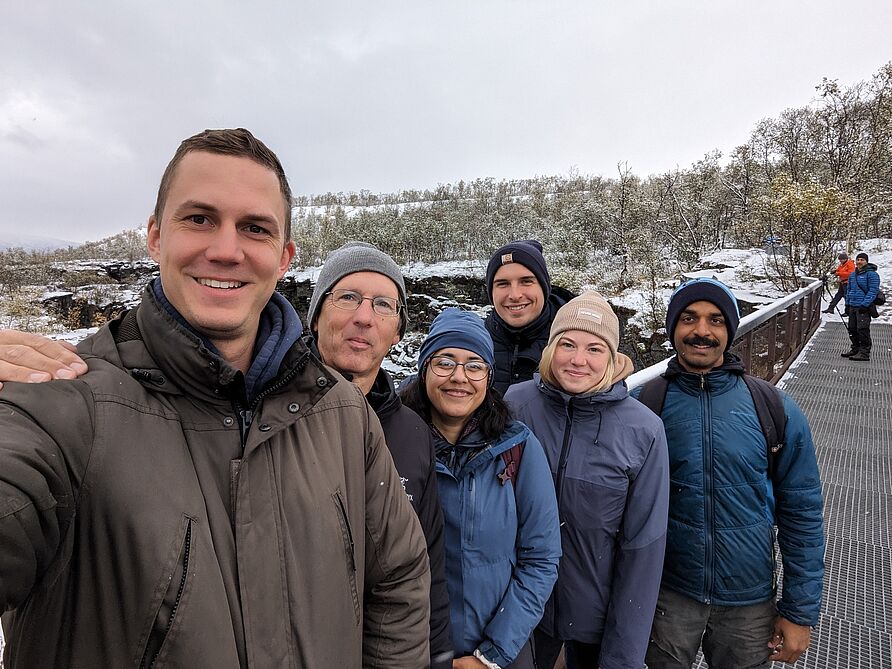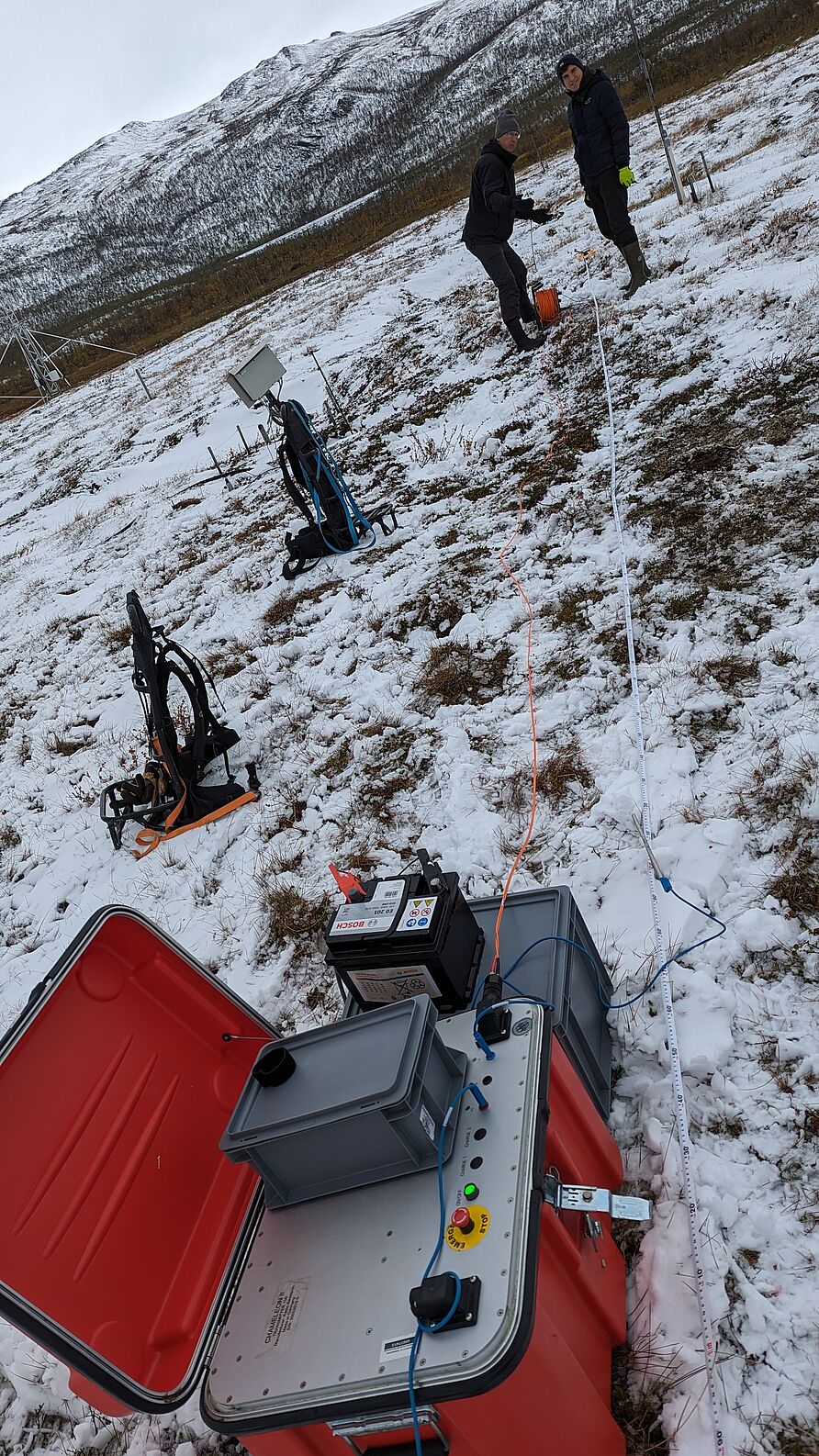An IGEP research team consisting of Madhuri Sugand, Raphael Schulz, Robin Zywczok and Andreas Hördt left for Abisko in northern Sweden on September 11 to conduct geophysical investigations of permafrost peatlands. The peat bogs, which are frozen year-round, are part of the subarctic permafrost zone, which is threatened by climate change. They can release large amounts of CO2 during thawing and thus exacerbate climate change through feedback effects.
Within the framework of the DFG-funded international research training group TransTip, research was carried out together with a working group from the University of Hannover to determine how deeply the surface thaws in summer, how groundwater and heat are transported, and how the thawing process continues from the surface into the depths. One focus of the geophysical exploration was on determining the ice content in the subsurface - an important parameter for using numerical simulations to predict the future development of permafrost regions. The high frequency induced polarization (HFIP) method is used to determine the ice content. The instrument, nicknamed "Chameleon," which was specially developed for this purpose, has performed excellently and has provided a lot of data that will now be analyzed in the coming weeks and months. In addition, an ice core was taken to check the measurement results locally - a strenuous and exciting undertaking.
The group was also able to enjoy a special "highlight" in a double sense: On several evenings, northern lights could be seen, which offered a little compensation for many a cold working day with their spectacular shapes.

